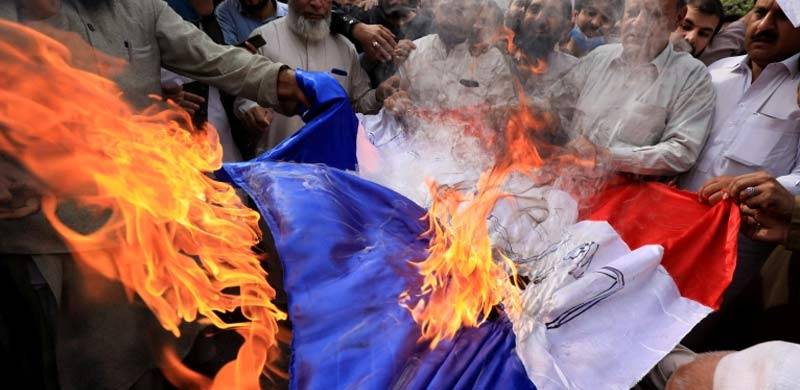
Islamist extremism and Islamophobia are two sides of the same coin. Both are products of fear breeding fear, scapegoating, the glorification of irrationalism, and a crisis of identity resolved through violence and bigotry, writes Nadeem F. Paracha
Prime Minister of Pakistan, Imran Khan often tweets and delivers statements against Islamophobia. Interestingly, in Pakistan, these receive some rather mixed responses. Many accuse him of exhibiting outright hypocrisy, pointing out that it was ironic that a PM of a country where religious and sectarian minorities are constantly attacked by radical Islamist outfits, should be lamenting Islamophobia in the West.
Indeed, there is always much irony in Muslim states that overtly criticise Islamophobia while doing precious little to address the persecution of minority faiths or sects in their own realms. Therefore, a prominent Muslim (or for that matter, any Muslim) should be very careful in his or her criticism of Islamophobia. If their laments are to be taken seriously, without sounding so obviously contradictory, then they should be well informed about the inherent contradictions that these laments carry. The wording of their criticism of Islamophobia should thus be a more measured exercise.
PM Khan should be aware of how Pakistan’s military-establishment under General Raheel Sharif and the parliament during the third PML-N government was wording their responses in this context. Ever since 2015, when the military and the government initiated a widespread operation against militant outfits, they condemned violence against Muslims elsewhere, but they always attached a reminder with it cueing that Pakistan had fought a vicious war against religious terrorism. This somewhat neutralised the contradictions that emerge when a country with a history of sectarian bloodshed and violence against minorities wags a finger at a country guilty of exhibiting Islamophobia.
Because when this question does arise, it is countered by the reminder that Pakistan is actually doing something about it. But PM Khan usually goes slightly off the rails in his outrage against Islamophobia. He does not balance his critique by failing to confess that Pakistan too has a problem of religiously motivated violence but one that it is trying to address. But then, when he was in opposition, Khan and his party had actually opposed any serious action against religious militancy. By now the complex reality of being in power should have gradually transformed his views. So one expects him to be a bit more aware when commenting on the violence unleashed by white supremacists or Hindutva nationalists against Muslims.
So what really is Islamophobia? This question needs to be answered in a more thorough manner, especially by the Muslims themselves if they are to critique it without sounding entirely contradictory. According to the Oxford English Dictionary, Islamophobia is an ‘intense dislike or fear of Islam.’ In an article in the October 2015 issue of The Atlantic, Tanya Basu writes that the term was derived by the French word, ‘Islamophobie.’ It was first coined by French author Alain Quellien in 1910 to criticise the behaviour of French colonial administrators towards their Muslim subjects.
In her essay for the March 2006 issue of the Journal of Interpersonal Violence, L.P. Sheridan writes that the term’s first known usage in English appeared some 90 years later in 1991. It eventually made its way into the Oxford English Dictionary in 1997. This suggests that Islamophobia, as it is understood today, is a recent development. Professor Emeritus Bichara Khader, in his essay for the 2016 anthology The Search for Europe, writes that Islamophobia in Europe and the US is often linked to migrants from Muslim countries that are seen as a threat to Western culture and security.
He questions this assumption by adding that migration was not an issue at all in the West till the early 1970s, when thousands of Muslims from South Asia, South East Asia, the Middle East, and North Africa began arriving in various European cities from the 1950s onward. They were looking for work and higher wages. Khader writes that, as post-war economies boomed in Europe, these migrants were seen as being vital contributors to this boom.
Khader adds that it was only when the economies of Europe began to recede, especially after the 1973 international oil crisis, the term ‘migration problem’ came into play. Yet, it was still not linked to a ‘Muslim problem’ as it is today. Khader wrote that during the economic turmoil of the 1970s and early 1980s, that saw riots involving migrants and locals, especially in France and England, these were explained as ‘race riots’ and also included black migrants from the Caribbean islands and non-Muslim Indians. The reasons were economic. Neo-fascist outfits accused their governments of allowing non-white migrants to steal ‘white jobs.’
It really wasn’t a clash of cultures as such. Or not yet. According to Khader, till the early 1980s, Muslim migrants were not very public or exhibitionistic about their faith. For example, they were happy with a few basement mosques. Once settled, Muslim migrants began to marry women from their own countries and then brought them to Europe, even though it wasn’t uncommon for some to marry European women as well. Khader writes that most of the women who came as wives were from rural and semi-rural areas of Pakistan, India, Bangladesh, Indonesia, Egypt, etc. This development changed the settlers’ attitude towards their religion and cultural values. Whereas once they were fine with their small ‘basement mosques’, now they began to demand proper mosques.
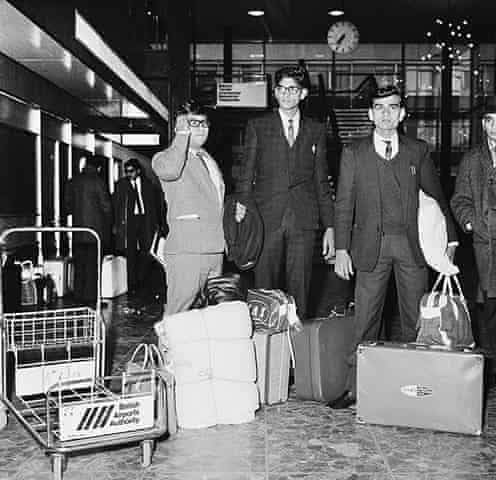
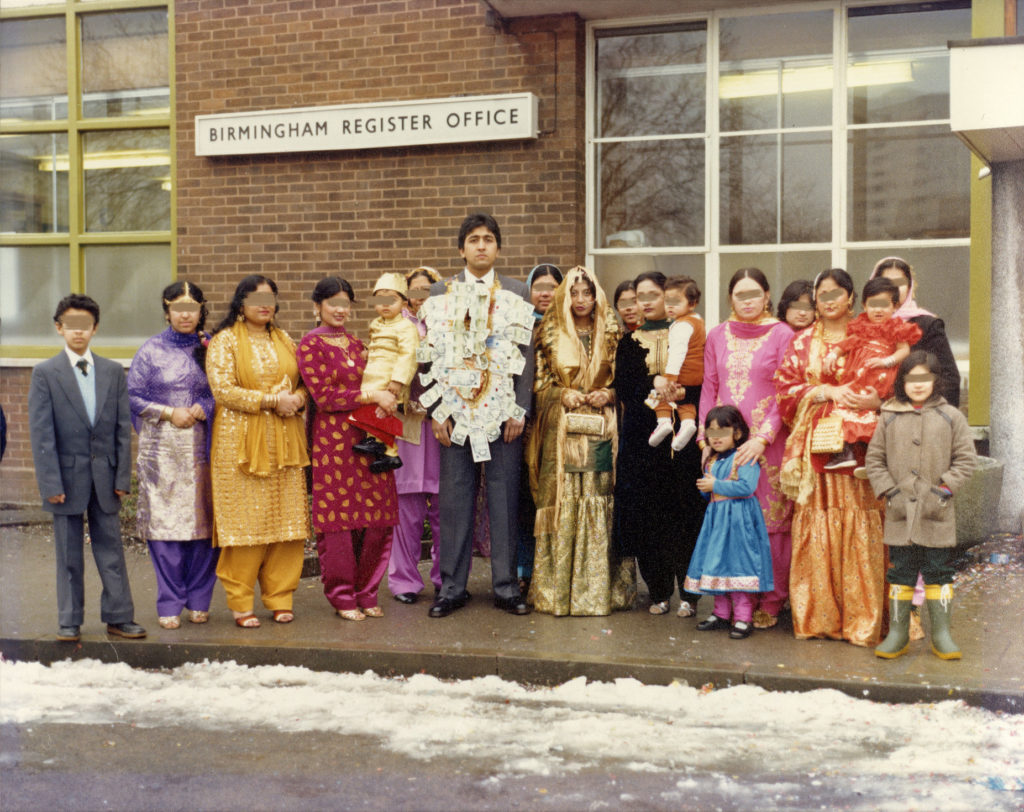
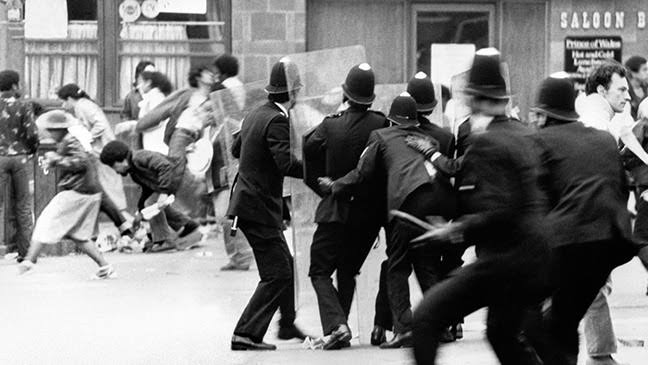
The change in behaviour attracted Muslim preachers and evangelists who began to set up shop in various European cities. They were particularly appealing to second generation Muslim migrants, especially from families who had failed to be fully assimilated by European integration policies. They began to adopt ‘Islamic’ products and behaviourism popularised by evangelical outfits to invent an identity for themselves as Muslims in non-Muslim countries. As the presence of veiled women and mosques grew, this is when the ‘migration problem’ began to be seen as a ‘Muslim problem’, triggering Islamophobia.
The more outward exhibition of ‘Muslimness’ in the West did contribute in the making of the aforementioned scenario. Nevertheless, Islamophobia is largely a construct of populist right-wing parties. Khader writes that there are 23 million Muslims in Europe. This means they are just five percent of Europe’s total population. Thus, Islamophobia has become a tool for populist politicians to describe Muslims as the ‘other’ and the ones to blame for the economic or cultural decline of a Western country.
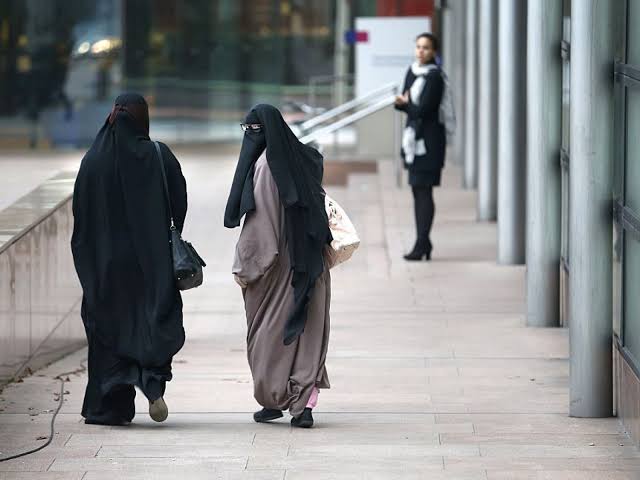
Many moons ago, when I was a kid living with my parents and grandparents in a house in Karachi’s Bath Island area, we had a neighbour who everyone called ‘Kachra Chacha’ [Garbage Uncle]. Of course, no one called him that to his face, but I am sure he knew. This middle-aged man had this curious habit of scolding everyone he would come across about the manner in which they disposed of their garbage. It was actually an admirable trait, but strangely enough, in his own house, he was not practising what he preached.
I remember when my cousins and I would visit his house to play with his nephews, there would be litter strewn all over his garden and piles of trash in the large round balcony which stood just above the garage. I have no idea why this was so, but the memory of this gentleman came to mind immediately after watching Prime Minister Imran Khan’s impassioned speech at the UN General Assembly on September 27, 2019.
I must admit, I was impressed by the way PM Khan addressed the issue of state repression being faced by Muslims living in India Occupied Kashmir (IOK). But I’m afraid a lot else about the same speech triggered that obscure memory about Kachra Chacha. It is rather easy to negate and contradict much of what the PM said during his speech and in the interviews he gave to the media in the US. His critics have already done that, questioning the current state of repression being faced by the Pakistani media and against Khan’s political opponents in the country. They have also called him out for doing precious little to address the harassment and violence that the country’s various minority communities continue to face at the hands of radicalised elements from the country’s majority religious community.
Therefore, his detractors believe that the PM’s pleas against hate speech, racial and religious bigotry, and especially, Islamophobia in Western societies ring hollow. Such views will never be able to find any worthwhile traction in the West or from outside his excitable constituencies in Pakistan. How can one point at garbage outside his home when he cannot (or refuses to) do much about the garbage piled inside his own house?
The way the PM sweepingly condemns issues such as Islamophobia in the West and repression on the basis of ideology and faith against Muslims outside Pakistan, it is rather easy to counter such condemnations by simply pointing out the many episodes of violence against members of minority groups in Pakistan and also between Muslim sects that have been reported for decades now.
It is a fact that, even when a Pakistani PM or president was willing to actually do something about this, he or she could not (and cannot) because of the nature of certain laws and clauses within the country’s constitution, mostly penned in the document between 1974 and 1991, is such that initiating effective reform in this context has become next to impossible.
This is why, even while one can argue that certain Western countries infested with problems such as Islamophobia and racial bigotry do not have the right to point fingers at Muslim countries such as Pakistan for failing to curb religious violence and harassment against minorities, one can always stress the fact that, unlike Pakistan, their constitutions do not have laws that encourage and even shield acts and actors hell bent on inflicting violence in the name of faith.
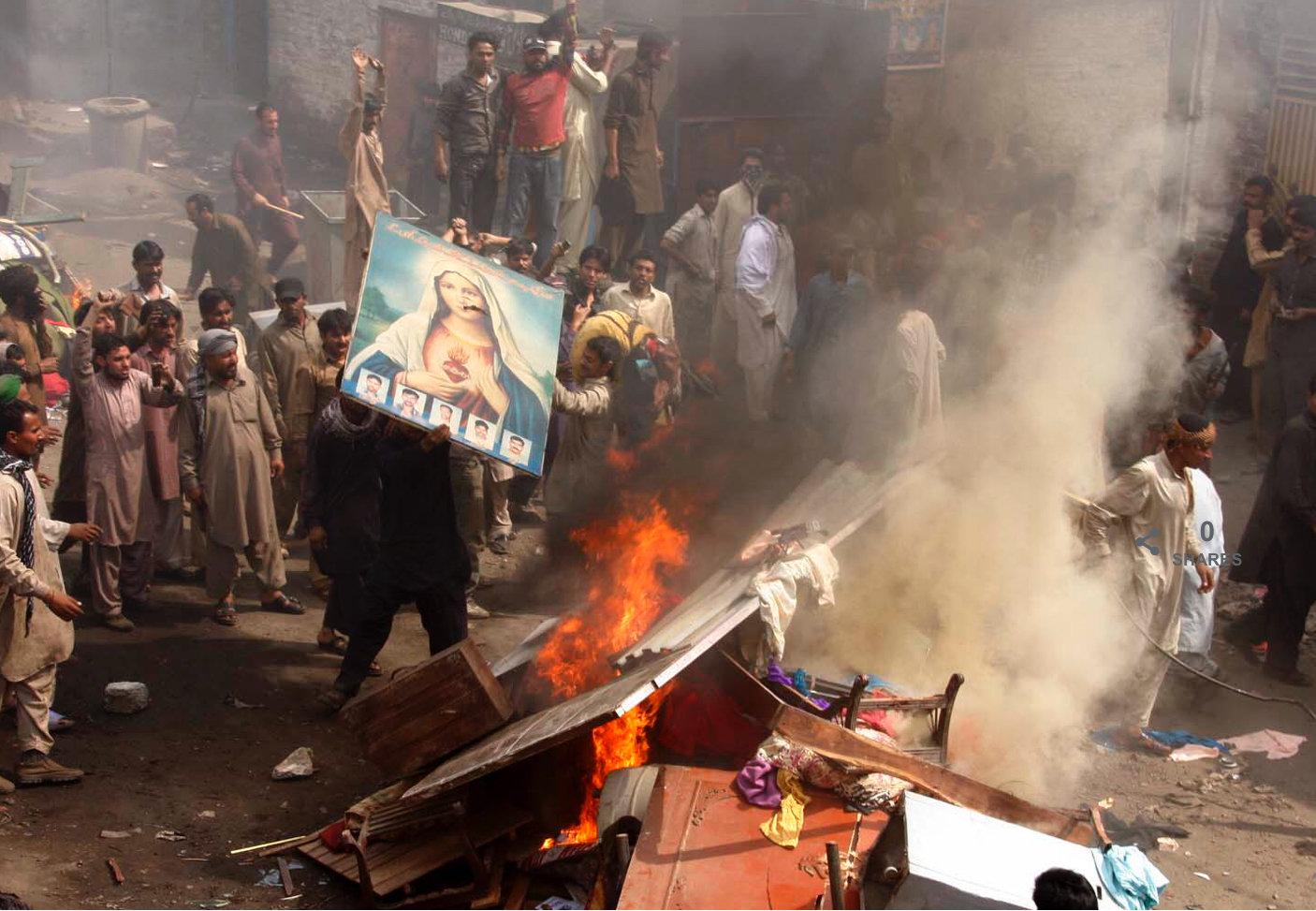
PM Khan has been dialling up his rhetoric against Islamophobia. But the PM’s rhetoric in this regard can only be effective if it is balanced by initiatives which would show Pakistan as doing more to curb extremism in its own backyard.
There is absolutely nothing new or insightful about lecturing the US or Europe about how they had helped Pakistan create Islamic militants in the 1980s (before dumping them). The US government itself has repeatedly admitted this ever since former US Secretary of State Hilary Clinton visited Pakistan in 2011.
Most of PM Khan’s ideas are still cemented in the many apologias that emerged from a muddled potpourri of anti-West narratives developed during the last three decades. These were narratives that aided those who were unwilling to recognise their own incompetence, complacencies, and mistakes, by putting the blame on others regarding extremism. Islamist extremism and Islamophobia are two sides of the same coin. Both are products of fear breeding fear, scapegoating, the glorification of irrationalism, and a crisis of identity resolved through violence and bigotry.
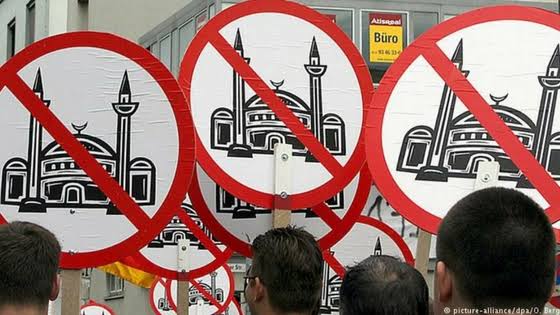
Prime Minister of Pakistan, Imran Khan often tweets and delivers statements against Islamophobia. Interestingly, in Pakistan, these receive some rather mixed responses. Many accuse him of exhibiting outright hypocrisy, pointing out that it was ironic that a PM of a country where religious and sectarian minorities are constantly attacked by radical Islamist outfits, should be lamenting Islamophobia in the West.
Indeed, there is always much irony in Muslim states that overtly criticise Islamophobia while doing precious little to address the persecution of minority faiths or sects in their own realms. Therefore, a prominent Muslim (or for that matter, any Muslim) should be very careful in his or her criticism of Islamophobia. If their laments are to be taken seriously, without sounding so obviously contradictory, then they should be well informed about the inherent contradictions that these laments carry. The wording of their criticism of Islamophobia should thus be a more measured exercise.
PM Khan should be aware of how Pakistan’s military-establishment under General Raheel Sharif and the parliament during the third PML-N government was wording their responses in this context. Ever since 2015, when the military and the government initiated a widespread operation against militant outfits, they condemned violence against Muslims elsewhere, but they always attached a reminder with it cueing that Pakistan had fought a vicious war against religious terrorism. This somewhat neutralised the contradictions that emerge when a country with a history of sectarian bloodshed and violence against minorities wags a finger at a country guilty of exhibiting Islamophobia.
Because when this question does arise, it is countered by the reminder that Pakistan is actually doing something about it. But PM Khan usually goes slightly off the rails in his outrage against Islamophobia. He does not balance his critique by failing to confess that Pakistan too has a problem of religiously motivated violence but one that it is trying to address. But then, when he was in opposition, Khan and his party had actually opposed any serious action against religious militancy. By now the complex reality of being in power should have gradually transformed his views. So one expects him to be a bit more aware when commenting on the violence unleashed by white supremacists or Hindutva nationalists against Muslims.
So what really is Islamophobia? This question needs to be answered in a more thorough manner, especially by the Muslims themselves if they are to critique it without sounding entirely contradictory. According to the Oxford English Dictionary, Islamophobia is an ‘intense dislike or fear of Islam.’ In an article in the October 2015 issue of The Atlantic, Tanya Basu writes that the term was derived by the French word, ‘Islamophobie.’ It was first coined by French author Alain Quellien in 1910 to criticise the behaviour of French colonial administrators towards their Muslim subjects.
In her essay for the March 2006 issue of the Journal of Interpersonal Violence, L.P. Sheridan writes that the term’s first known usage in English appeared some 90 years later in 1991. It eventually made its way into the Oxford English Dictionary in 1997. This suggests that Islamophobia, as it is understood today, is a recent development. Professor Emeritus Bichara Khader, in his essay for the 2016 anthology The Search for Europe, writes that Islamophobia in Europe and the US is often linked to migrants from Muslim countries that are seen as a threat to Western culture and security.
He questions this assumption by adding that migration was not an issue at all in the West till the early 1970s, when thousands of Muslims from South Asia, South East Asia, the Middle East, and North Africa began arriving in various European cities from the 1950s onward. They were looking for work and higher wages. Khader writes that, as post-war economies boomed in Europe, these migrants were seen as being vital contributors to this boom.
Khader adds that it was only when the economies of Europe began to recede, especially after the 1973 international oil crisis, the term ‘migration problem’ came into play. Yet, it was still not linked to a ‘Muslim problem’ as it is today. Khader wrote that during the economic turmoil of the 1970s and early 1980s, that saw riots involving migrants and locals, especially in France and England, these were explained as ‘race riots’ and also included black migrants from the Caribbean islands and non-Muslim Indians. The reasons were economic. Neo-fascist outfits accused their governments of allowing non-white migrants to steal ‘white jobs.’
It really wasn’t a clash of cultures as such. Or not yet. According to Khader, till the early 1980s, Muslim migrants were not very public or exhibitionistic about their faith. For example, they were happy with a few basement mosques. Once settled, Muslim migrants began to marry women from their own countries and then brought them to Europe, even though it wasn’t uncommon for some to marry European women as well. Khader writes that most of the women who came as wives were from rural and semi-rural areas of Pakistan, India, Bangladesh, Indonesia, Egypt, etc. This development changed the settlers’ attitude towards their religion and cultural values. Whereas once they were fine with their small ‘basement mosques’, now they began to demand proper mosques.

Migrants from Pakistan arrive in the UK in the 1960s.

1978: A Pakistani man in the UK with his wife from his hometown in Pakistan.

Race riots in Brixton, 1981.
The change in behaviour attracted Muslim preachers and evangelists who began to set up shop in various European cities. They were particularly appealing to second generation Muslim migrants, especially from families who had failed to be fully assimilated by European integration policies. They began to adopt ‘Islamic’ products and behaviourism popularised by evangelical outfits to invent an identity for themselves as Muslims in non-Muslim countries. As the presence of veiled women and mosques grew, this is when the ‘migration problem’ began to be seen as a ‘Muslim problem’, triggering Islamophobia.
The more outward exhibition of ‘Muslimness’ in the West did contribute in the making of the aforementioned scenario. Nevertheless, Islamophobia is largely a construct of populist right-wing parties. Khader writes that there are 23 million Muslims in Europe. This means they are just five percent of Europe’s total population. Thus, Islamophobia has become a tool for populist politicians to describe Muslims as the ‘other’ and the ones to blame for the economic or cultural decline of a Western country.

Veiled Muslim women in Denmark.
Many moons ago, when I was a kid living with my parents and grandparents in a house in Karachi’s Bath Island area, we had a neighbour who everyone called ‘Kachra Chacha’ [Garbage Uncle]. Of course, no one called him that to his face, but I am sure he knew. This middle-aged man had this curious habit of scolding everyone he would come across about the manner in which they disposed of their garbage. It was actually an admirable trait, but strangely enough, in his own house, he was not practising what he preached.
I remember when my cousins and I would visit his house to play with his nephews, there would be litter strewn all over his garden and piles of trash in the large round balcony which stood just above the garage. I have no idea why this was so, but the memory of this gentleman came to mind immediately after watching Prime Minister Imran Khan’s impassioned speech at the UN General Assembly on September 27, 2019.
I must admit, I was impressed by the way PM Khan addressed the issue of state repression being faced by Muslims living in India Occupied Kashmir (IOK). But I’m afraid a lot else about the same speech triggered that obscure memory about Kachra Chacha. It is rather easy to negate and contradict much of what the PM said during his speech and in the interviews he gave to the media in the US. His critics have already done that, questioning the current state of repression being faced by the Pakistani media and against Khan’s political opponents in the country. They have also called him out for doing precious little to address the harassment and violence that the country’s various minority communities continue to face at the hands of radicalised elements from the country’s majority religious community.
Therefore, his detractors believe that the PM’s pleas against hate speech, racial and religious bigotry, and especially, Islamophobia in Western societies ring hollow. Such views will never be able to find any worthwhile traction in the West or from outside his excitable constituencies in Pakistan. How can one point at garbage outside his home when he cannot (or refuses to) do much about the garbage piled inside his own house?
The way the PM sweepingly condemns issues such as Islamophobia in the West and repression on the basis of ideology and faith against Muslims outside Pakistan, it is rather easy to counter such condemnations by simply pointing out the many episodes of violence against members of minority groups in Pakistan and also between Muslim sects that have been reported for decades now.
It is a fact that, even when a Pakistani PM or president was willing to actually do something about this, he or she could not (and cannot) because of the nature of certain laws and clauses within the country’s constitution, mostly penned in the document between 1974 and 1991, is such that initiating effective reform in this context has become next to impossible.
This is why, even while one can argue that certain Western countries infested with problems such as Islamophobia and racial bigotry do not have the right to point fingers at Muslim countries such as Pakistan for failing to curb religious violence and harassment against minorities, one can always stress the fact that, unlike Pakistan, their constitutions do not have laws that encourage and even shield acts and actors hell bent on inflicting violence in the name of faith.

A mob of fanatics burn down a church in Pakistan.
PM Khan has been dialling up his rhetoric against Islamophobia. But the PM’s rhetoric in this regard can only be effective if it is balanced by initiatives which would show Pakistan as doing more to curb extremism in its own backyard.
There is absolutely nothing new or insightful about lecturing the US or Europe about how they had helped Pakistan create Islamic militants in the 1980s (before dumping them). The US government itself has repeatedly admitted this ever since former US Secretary of State Hilary Clinton visited Pakistan in 2011.
Most of PM Khan’s ideas are still cemented in the many apologias that emerged from a muddled potpourri of anti-West narratives developed during the last three decades. These were narratives that aided those who were unwilling to recognise their own incompetence, complacencies, and mistakes, by putting the blame on others regarding extremism. Islamist extremism and Islamophobia are two sides of the same coin. Both are products of fear breeding fear, scapegoating, the glorification of irrationalism, and a crisis of identity resolved through violence and bigotry.

An anti-Muslim rally Switzerland.
